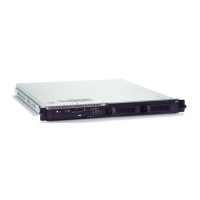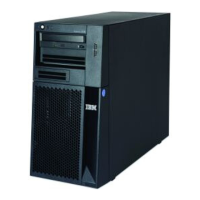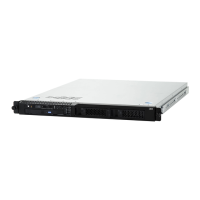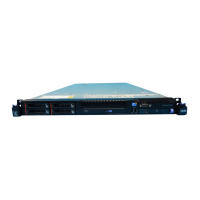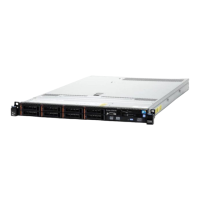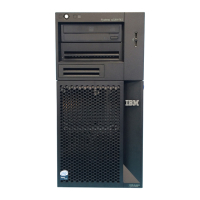Internal Magnetic Media
352 AS/400e System Handbook
#6381 2.5 GB ¼-Inch Cartridge (QIC)
The standard ¼-inch cartridge is the #6382. Therefore, the #6381 should only be ordered
when compatibility with System/36 tape is required.
With special compaction using LZ1 (Lempel Ziv 1), the #6381 tape unit supports up to 5 GB.
The #6381 may be used for save/restore, Alternate IPL, program distribution, migration, and
QIC tape exchange. For read and write compatibility, refer to the internal tape read/write
compatibilities table on page 346.
#6382 4 GB ¼-Inch Cartridge (QIC)
The #6382 is not compatible with System/36 tape units.
With special compaction using LZ1 (Lempel Ziv 1), the #6382 tape unit supports up to 8 GB.
It may be used for save/restore, Alternate IPL, program distribution, migration, and QIC tape
exchange. For read and write compatibility, refer to internal tape read/write compatibilities
table on page 346.
#6383 16 GB ¼-Inch Cartridge Tape Unit
The #6383 is not compatible with System/36 tape units.
The #6383 can be used for save/restore, Alternate IPL, program distribution, migration, and
¼-inch cartridge tape exchange. One #6383 can be controlled by the MFIOP. Extra #6383s
must be controlled by the #6513. It requires V4R1.
The #6383 provides 16 GB capacity native and 32GB capacity compressed with a data
transfer rate of 1.5 MB/s (native) and 3 MB/s (with compression) using a 1500-foot cartridge
tape.
The #6383 provides 13 GB capacity native and 26 GB capacity compressed with a data
transfer rate of 1.5 MB/s (native) and 3 MB/s (with compression) using a 1200-foot cartridge
tape.
#6385 13 GB ¼-Inch Cartridge (QIC)
The #6385 is not compatible with System/36 tape units.
Tape tensioning control improvements in the #6385 tape unit eliminate the need for an
auto-retension pass during the data cartridge load sequence. This is a major time saving
since the auto-retension pass on earlier QIC tape units can take up to five minutes. The
#6385 Tape Unit retensions the data cartridge only when a loss of tension is detected. For
typical operating conditions, this should be very infrequent.
